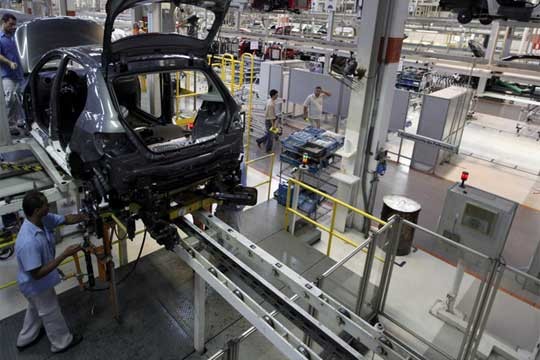Investing in Brazil Be Aware of THIS Industry
Post on: 16 Март, 2015 No Comment

The overall performance of Brazilian economy in 2011 was modest: GDP grew by around 3%, the second worst performance since 2004 and the worst in Latin America. Many experts blame the manufacturing industry. which has remained stagnant, as the main cause for such a low level of GDP growth.
The trade deficit in Brazil’s manufacturing industry in 2011 (January / November) grew 37% in relation to 2010, reaching $ 44 billion. In 2006, the balance was a surplus of $ 30 billion.
The manufacturing industry has not yet regained the levels of production it had prior to the crisis of 2008-2009. In 2011, the production of durable consumer goods declined by almost 2%. Even worse was the case of non-durable goods: in the textile business, production fell 15%, in footwear and leather goods -10%, and in clothing -3.3%. Instead of moving forward, the industry is, at best, walking sideways.
Fellow readers may ask: how is that possible, considering that consumption has increased so quickly in recent years? Since 2007 retail sales rose by 40% in Brazil.
The answer is simple: imports of manufactured goods have dramatically grown. The trade deficit in the manufacturing industry in 2011 (January / November) grew 37% in relation to 2010, reaching $ 44 billion! In 2006 the balance was a surplus of $ 30 billion.
There is a deindustrialization underway in Brazil. In addition to the shrinkage of the sector in relation to GDP (for more than a decade), there is an increasing disintegration of production chains, turning some industrial activities into something very similar to the “maquiladoras” in Mexico.
But beware! The manufactured goods Brazil import are not cheaper because the Brazilian manufacturing industry is more inefficient than the Chinese or Korean, though, little by little, in a vicious circle, this may become true. The main reason is the systemic high cost of the Brazilian economy.
First, taxes on the manufacturing industry are way too high. A simple example: 52% of the cost per kw of electricity goes to taxes!
Second, infrastructure is too poor. The federal government investment plans in infrastructure are just not large enough. Brazil holds one of the lowest public investment of the world in relation to GDP. On the top of that, the government often delivers less than announced because of lack of planning, priorities, execution, and corruption.
The third prerequisite for Brazil’s deindustrialization is the persistent overvaluation of the Brazilian currency against foreign currencies – about 70% since 2002, according to estimates by Armando Castelar, prominent Brazilian economist. This greatly increases Brazilian production costs in dollars, from wages to electricity. (See: Big Mac Index: Brazil’s Real Is The Most Overvalued Currency In The World ).
If isolated, the overvaluation of Brazil’s Real is the most important reason to Brazil’s deindustrialization. It helps to figure out why Brazil has one of the most expensive Big Macs in the world and why Brazilian tourists in New York. though fewer in number than Germans or British, spend more than these two combined. (See: Why The US Should Include Brazil In The Visa Waiver Program ).
The Brasil Maior program, loosely translated as Bigger Brazil plan, launched in August 2011 can not be considered a comprehensive and coherent economic policy. It does not address the causes of loss of competitiveness of the industry and it creates distortions and injustices. According to the OECD, the Bigger Brazil plan “may provide short-term relief” for manufacturing companies but “is not sufficient to reduce the cost disadvantage of producing in Brazil.” The most extravagant points of this plan are the anarchy of the purchasing policy for machinery and equipment for the oil industry and the confusion of the criteria for subsidized credit from BNDES.














